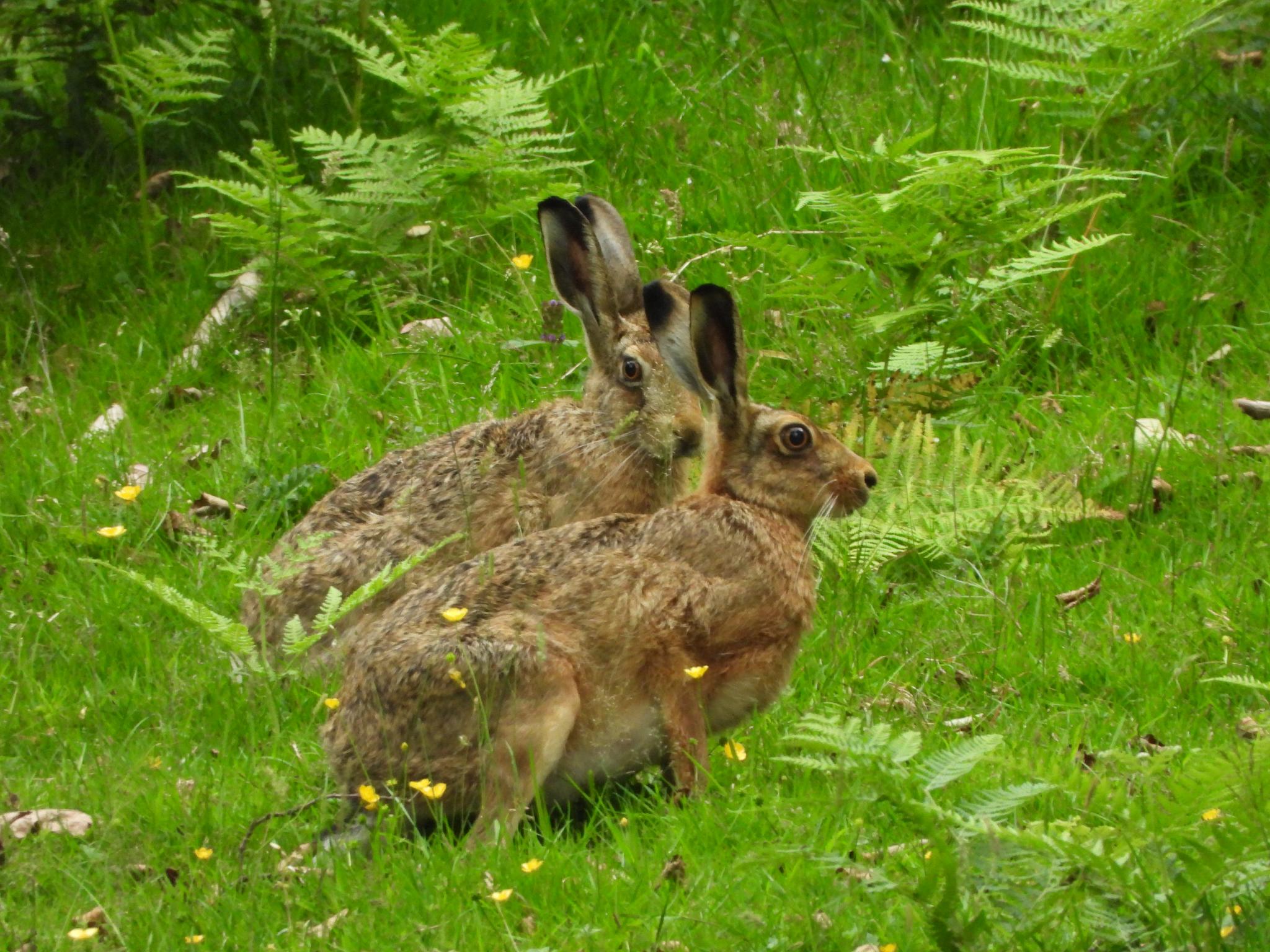I was asked recently if I was a vegetarian as I mentioned I don’t eat Rabbit stew or similar. The fact is no I am not, it’s just that having grown up from an early age, introduced to nature by my late father and always having a love for the natural world, I just couldn’t bring myself to eat Rabbit, Hare, Mallard or Partridges amongst other food items. In fact, one summer when guiding two Welsh couples around Andalusia, we stopped off at a mountain cafe where they had about ten live Red-legged Partridges in cages that had been trapped by some local hunters. We managed to buy them all and they were placed into several cardboard boxes for us. What the proprietor didn’t know at the time was they were destined for freedom - as in a different mountainous area, we proudly released them into the wild where they could live the life of birds with no geographical limits. We like to think we had given them a second chance, and it was well worth what we had spent.
The Hare is perhaps the only species completely at home in the open, short grazed grass. Unlike the more nervous Rabbit, they stay well away from cover, right in the open, where they can see a predator (human or animal) approaching. Surprisingly, they never use burrows and the young, known as leveret’s are born fur covered and very alert. Some lucky observers have seen a spectacle that takes place in the early spring - and one that has given rise to the popular saying ‘as mad as a March Hare’. Here rival males stand tall on their hind legs and ‘box’ each other and forms part of a territorial contest which does not cause any lasting injuries. The mad Hare reappears in Alice’s Adventures in Wonderland by Lewis Carroll, in which Alice participates in a crazy tea party with the March Hare and the Mad Hatter.
They have a warm brown back but black, white and sandy coloured variations can occur. The underside is white and the ears are noticeably long with black tips - this is an excellent identification feature even from long distances. The tip of the tail is dark and they have long hind legs and a loping gait. They are mostly nocturnal but can be seen in the daytime too. They have a few features that distinguish them from the Rabbit. For a start, the Hare is noticeably larger with as I say, long ears with black tips. When they run the hind legs look quite long. A Rabbit on the other hand tends to hop around in the open, but when it runs for cover it is obviously squatter looking than the Hare. Finally, the Rabbit has a white furry tail which it flashes upon danger approaching to alert the others. The Hare however simply relies on its agile speed when danger looms.
Hares are herbivorous and feed mainly on grasses and herbs, supplementing these with twigs, buds, bark and field crops, particularly in winter. Their natural predators include large birds of prey and the Genet. They rely on high-speed endurance running to escape predation, having long, powerful limbs and large nostrils. The female nests in a depression on the surface of the ground rather than in a burrow and the young are active as soon as they are born. Litters may consist of three or four young and a female can bear three litters a year, with Hares living for up to twelve years. The breeding season lasts from January to August. The Hare is an adaptable species and can move into new habitats, but it thrives best when there is an availability of a wide variety of weeds and other herbs to supplement its main diet of grasses. Fortunately, Majorca has a lot of ideal habitat for them.
Hares are primarily nocturnal and spend a lot of time foraging. During the daytime, a Hare hides in a depression in the ground called a “form” where it is partially hidden. Hares can run at 43 mph and when confronted by predators they rely on outrunning them in the open. They are generally thought of as anti- social but can be seen in both large and small groups. They do not appear to be territorial, living in shared home ranges of around 740 acres. Hares communicate with each other by a variety of visual signals. To show interest they raise their ears (lowering the ears warns others to keep away). When challenging another male, a Hare thumps its front feet whereas the hind feet are used to warn others of a predator. A Hare squeals when hurt or scared and a female makes ‘guttural’ calls to attract her young. I have to say, with the Rabbit being so common, it is a lovey sight when I see a Hare.
Sometimes I get lucky, and with stealth and patience they will ignore me and sit it out and carry on about their business, allowing me the chance to get some decent photographs, as in the ones you can see here, but always keeping large orange-brown beady eye on me. Hare today, but hopefully not gone tomorrow.


No comments
To be able to write a comment, you have to be registered and logged in
Currently there are no comments.